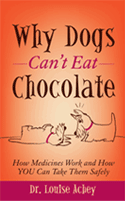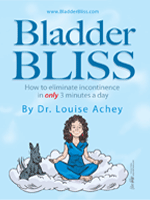Archive for April, 2014
Q: What are Epsom salts made of, and why are they called that?
Epsom salts is the common name for magnesium sulfate, a magnesium salt sometimes abbreviated as MgSO4. According to the the United States Dispensatory, in 1675 Dr. Grew documented how he obtained magnesium sulfate crystals from evaporating the mineral water of Epsom, England. Because the mineral water from the Seiditz Spring in Germany was nearly identical to the water from Epsom, both Seiditz salts and Epsom salts were used interchangably to refer to magnesium sulfate, but over time the name only the name Epsom Salts stuck.
By the late 1880s a new process was developed for producing both table salt and Epsom salt. Instead of having to mine it, salt could be produced by evaporating water from the sea. After extracting the desirable sodium chloride from seawater the brine left over contained nearly pure magnesium sulfate. Although in Colonial America magnesium sulfate was produced from veins of rock near Baltimore and in southern Pennsylvania, today’s Epsom salts are still produced by evaporating seawater.
Magnesium sulfate is widely used today both externally as either a poultice or solution for soaking, and internally as a cathartic. Often packaged in quart sized milk cartons, Epsom Salts is a white, odorless powder that tastes salty and bitter. Cathartics like magnesium sulfate relieve constipation by helping fecal matter move through the colon and rectum. Many cathartics are derived from natural sources, and have been often added to patent medicines in America.
Cathartics are classified in two different ways: by how they work and the intensity of their effect on your bowels. There are 4 groups of cathartics named for how they work, including irritants or stimulant laxatives, bulk or saline laxatives, emollients and fecal softeners. The older system of grouping by intensity has 3 categories: “laxatives”, “purgatives”, and (gulp) “drastics”. Epsom salts are classified as a saline laxative and depending on the concentration used are considered either a laxative or a purgative.
Other magnesium products that share a stimulant action on your bowels include magnesium hydroxide and magnesium citrate. Magnesium hydroxide is less powerful than the sulfate version, and has a milky white color, giving it the name milk of magnesia. Some liquid antacids contain magnesium hydroxide, including Maalox® and Mylanta®. Magnesium citrate, a clear solution of magnesium contains extra sodium bicarbonate and citric acid to make it effervescent. It is still available in a glass bottle as citrate of magnesia.
How does Epsom salts work? When you add the crystals to water, the result is concentrated, salty water. If you drink it, it will “pull” water out of your body and into your intestines, making your stool more liquid. The increased watery bulk of your stool encourages it to move more quickly through your intestine, colon and rectum. The more concentrated the solution of magnesium sulfate, the more powerful its effect as a laxative.
Soaking in the concentrated salty solution of Epsom salts dissolved in warm water works to shrink tissues surrounding an injury. The ability of magnesium sulfate solution to pull fluid out of tissues can be helpful in decreasing swelling and pain. Soaking in warm Epsom salts softens and shrinks the skin making foreign bodies like splinters and insect stingers easier to remove. Some people add Epsom salts to bath water for soaking in or as a therapeutic bath to relieve muscle and joint aches.
The Epsom Salt Council was formed in 1993 to encourage the use of their product. They have a website promoting Epsom salts at www.epsomsaltcouncil.org, with sections suggesting uses in the garden, as a beauty aid, in crafts and for health.
Epsom salts are safe when used externally for soaking, but be careful about using it by mouth, as the amount of magnesium that is absorbed into your body can be unpredictable. One woman died from gargling with Epsom salts due to absorbing excessive magnesium, causing her heart to stop. Another woman almost died from heart block after using an enema made from 3 tablespoons of Epsom salts dissolved in warm water. Two children went into cardiac arrest and one of them died after consuming several doses of a mega-mineral supplement containing magnesium. If you use Milk of Magnesia or magnesium citrate for constipation, please DO NOT exceed the doses recommeded on the label.
Leave a Comment
Given enough time, pills get crumbly and liquids and capsules lose their potency. It’s a good idea to sort through your medicine cabinet and remove any unused or expired prescriptions.
It’s a sad fact of today, that medicines have become targets of misuse and abuse. Family members and intruders will often check bathroom medicine cabinets, looking for medicines they can use or sell. It’s important to dispose of medicines you no longer need or use. But DON’T JUST FLUSH THEM INTO THE WATER SYSTEM. The best way to remove medicines from your home AND protect the environment is to take them to a take-back event or medication disposal site in your community. If you can’t find one nearby, you can also dispose of them at home with just a couple of extra steps before you put them in the trash. The video below shows you how I do it at my house:
But you don’t have to do it at home. There’s a big take-back event coming up soon: the 8th National Prescription Drug Take-Back Day will be taking place in communities across the nation on Saturday, April 26 from 10 am to 2 pm. It’s a partnership between the federal Drug Enforcement Administration (DEA) and local law enforcement agencies with participating sites all across the country willing to accept your medicines for disposal, with no fees or questions asked.
To find the nearest participating location to you, go to http://www.deadiversion.usdoj.gov/drug_disposal/takeback. You can also call 1-800-882-9539. You can also check with your local community pharmacy for other drug disposal sites and services.
Found some old or outdated medicine you need to get rid of? Great! You can take them directly to a drug take-back site, just in their own pill bottles. But if you need to dispose of your old medicine at home, then BEFORE you put them in the trash, Do This FIRST:
Open your prescription bottles and dump out the pills, mixing them in with kitty litter or used coffee grounds in a container with a secure lid before placing them in your trash. At my house we use “puppy litter” instead. You can meet Clancy and see why we call it “puppy litter” below:
Oh, and about those empty pill bottles you now have? Don’t just pitch them in the trash! Take a moment to PROTECT YOUR PRIVACY first. Use a black marker such as a Sharpie® to mark out any identifying information such as your name, prescription number and the drug name. NOW you can toss ’em.
-Dr. Louise
Leave a Comment
Q: My 2-year old hates taking medicine. What can I do to make it taste better?
Many liquid medicines taste awful, and getting a child to take a spoonful of something bitter can be quite a battle. If you’ve ever grumbled, “Don’t doctors have ANY IDEA how nasty this stuff tastes?” you’re not the only one!
Every few years, our clinic sponsors a “taste test” of common liquid medicines to help educate our family physicians-in-training by giving them a taste – literally – of their own medicine.
The new doctors line up to sample 10 to 12 different liquid medicines, half of which are commonly prescribed antibiotics. The other samples include medicines for asthma like prednisone and prednisolone, stomach medicines like Zantac® (ranitidine) and laxatives like Miralax® and docusate.
Each “judge” picks up a small paper cup with 10 plastic spoons, a pencil, and a scoring sheet that lists each medicine in alphabetical order. Their mission is to rate each medicine from 1 to 5 on the following 4 characteristics: Smell, Taste, Texture, and Aftertaste. A sample with an Extremely Good/Pleasant taste would score 5 on the 1-5 scale compared to Extremely Bad/Terrible, which would rate it as 1.
To avoid creating a bottleneck, we set up two tables, each with an identical set of liquid samples awaiting their judgment. Two double-lined trash containers stand close by, along with 2-liter bottles of grapefruit flavored Fresca® and lemon-lime Sprite®.
The judges’ job is to taste each offering and evaluate it. They are instructed to dip one of their unused plastic spoons into the liquid, sniff it, taste it, and then SPIT IT OUT. The lined trashcans nearby are used as spittoons and the Fresca® and Sprite® help to “cleanse their palate” after each sample.
As a veteran of several previous taste tests, I encourage the judges to spit, assuring them from painfully personal experience that though spitting isn’t pleasant, it’s much, much better than getting a world-class stomach ache.
As they mill around sampling the various colored liquids, you hear, “Smells okay, how bad can it taste?”… “Ugh, this one’s nasty”…“I always wondered how this tasted”… “How can something that smells good taste so awful?”…“Eeeuw!”
Our liquid antibiotic samples often include amoxicillin, amoxicillin with clavulanate, cephalexin, sulfamethoxizole-trimethoprim, and azithromycin. Along with these are liquid versions of prednisone and prednisolone, which are nearly identical medicines prescribed for asthma and severe allergic reactions. Prednisone tablets are widely used in adults; young doctors will often select the liquid version of prednisone when prescribing for children. Unfortunately, liquid prednisone tastes absolutely horrid. Prednisolone liquid tastes bitter but liquid prednisone tastes even WORSE. Having young doctors taste each one helps them remember to avoid using liquid prednisone and order prednisolone liquid instead.
As their votes are tallied, we ask our family physicians-in-training to brainstorm ways parents can deal with bad-tasting medicines. The most popular strategy? Mixing the medicine into something else, covering up its smell, taste or texture. Most liquid medicines can be given with food, so pudding, applesauce, or ice cream are good choices.
The next most popular approach is to follow up the spoonful of offensive medicine with a “chaser” to rinse off your taste buds quickly, removing the taste. The adult judges overwhelmingly preferred grapefruit flavored Fresca® as a “chaser” over the sweeter Sprite®. Other suggestions for chasers include fruit juices or a favorite soda. Chocolate syrup can cover up a lot of bitterness either by mixing it into pudding or ice cream with the medicine or used by itself as a chaser.
Because flavors depend on scent receptors found in the lining of your nose, an older child could hold his nose while swallowing and then quickly swallow something to remove the taste.
You can also add flavoring to the entire bottle of medicine. Some pharmacies will add flavoring to liquid medicines if you request it. You can also use small amounts of liquid flavor concentrates at home. Crystal Light® or MiO® are flavor concentrates found in most grocery stores. There are also small vials of candy making extracts used to flavor homemade candies available at some groceries and kitchen supply stores.
Even though some antibiotics must be kept in the refrigerator between doses, serving any liquid medicine really cold will usually change its flavor into something easier to swallow, like the difference between sipping an ice-cold beer or root beer and the same beverage at room temperature.
Leave a Comment



